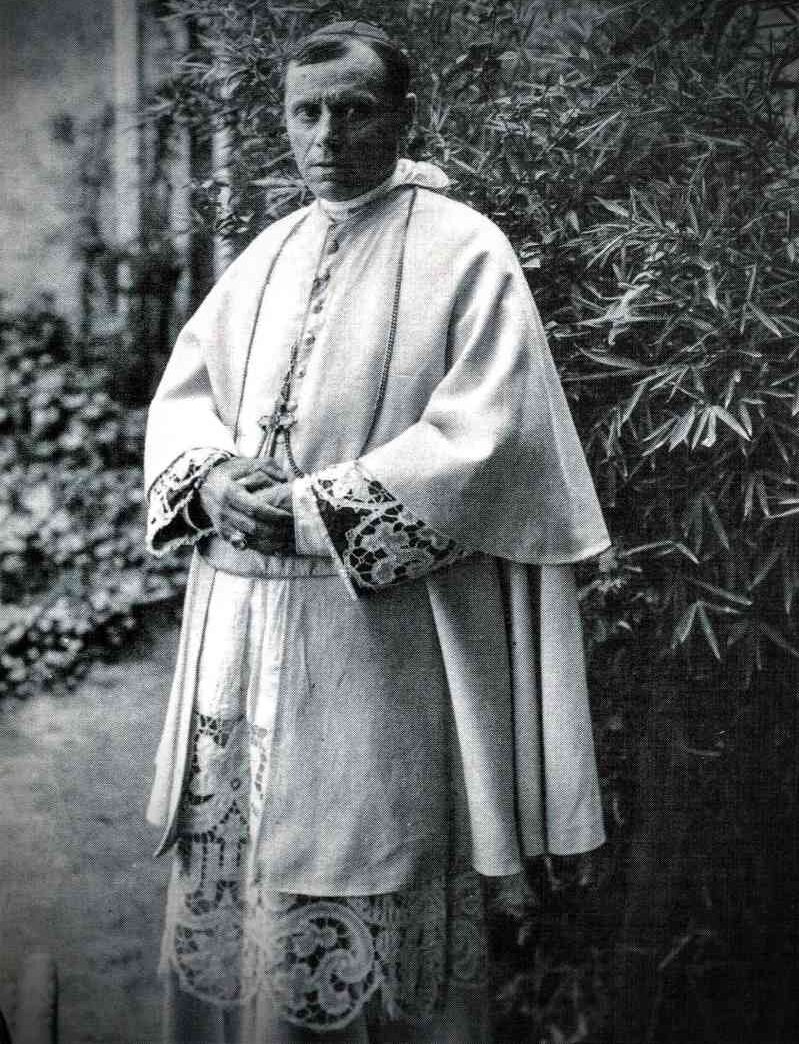Benedict XVI on Priestly Holiness
-thumb-300x411.jpg)
Heartfelt and Total Adherence to a New Form of Life
The missionary dimension of the priesthood is born from the priest’s sacramental configuration to Christ. As a consequence it brings with it a heartfelt and total adherence to what the ecclesial tradition has identified as apostolica vivendi forma. This consists in participation in a “new life”, spiritually speaking, in that “new way of life” which the Lord Jesus inaugurated and which the Apostles made their own.
In Every Authentically Priestly Heart: the Aspiration to Moral Perfection
Through the imposition of the Bishop’s hands and the consecratory prayer of the Church, the candidates become new men, they become “presbyters”. In this light it is clear that the tria munera are first a gift and only consequently an office, first a participation in a life, and hence a potestas. Of course, the great ecclesial tradition has rightly separated sacramental efficacy from the concrete existential situation of the individual priest and so the legitimate expectations of the faithful are appropriately safeguarded. However, this correct doctrinal explanation takes nothing from the necessary, indeed indispensable, aspiration to moral perfection that must dwell in every authentically priestly heart.
Year for Priests 2009-2010
Precisely to encourage priests in this striving for spiritual perfection on which, above all, the effectiveness of their ministry depends, I have decided to establish a special “Year for Priests” that will begin on 19 June and last until 19 June 2010. In fact, it is the 150th anniversary of the death of the Holy Curé d’Ars, John Mary Vianney, a true example of a pastor at the service of Christ’s flock. It will be the task of your Congregation, in agreement with the diocesan Ordinaries and with the superiors of religious institutes to promote and to coordinate the various spiritual and pastoral initiatives that seem useful for making the importance of the priest’s role and mission in the Church and in contemporary society ever more clearly perceived.
God: the Only Treasure People Desire to Find in a Priest
The priest’s mission, as the theme of the Plenary Assembly emphasizes, is carried out “in the Church”. This ecclesial, communal, hierarchical and doctrinal dimension is absolutely indispensable to every authentic mission and, alone guarantees its spiritual effectiveness. The four aspects mentioned must always be recognized as intimately connected: the mission is “ecclesial” because no one proclaims himself in the first person, but within and through his own humanity every priest must be well aware that he is bringing to the world Another, God himself. God is the only treasure which ultimately people desire to find in a priest.
The Priest: An Expert in Divine Intimacy
The mission is “communional” because it is carried out in a unity and communion that only secondly has also important aspects of social visibility. Moreover, these derive essentially from that divine intimacy in which the priest is called to be expert, so that he may be able to lead the souls entrusted to him humbly and trustingly to the same encounter with the Lord. Lastly, the “hierarchical” and “doctrinal” dimensions suggest reaffirming the importance of the ecclesiastical discipline (the term has a connection with “disciple”) and doctrinal training and not only theological, initial and continuing formation.
Uninterrupted Ecclesial Tradition
Awareness of the radical social changes that have occurred in recent decades must motivate the best ecclesial forces to supervise the formation of candidates for the ministry. In particular, it must foster the constant concern of Pastors for their principal collaborators, both by cultivating truly fatherly human relations and by taking an interest in their continuing formation, especially from the doctrinal and spiritual viewpoints. The mission is rooted in a special way in a good formation, developed in communion with uninterrupted ecclesial Tradition, without breaks or temptations of irregularity. In this sense, it is important to encourage in priests, especially in the young generations, a correct reception of the texts of the Second Ecumenical Vatican Council, interpreted in the light of the Church’s entire fund of doctrine. It seems urgent to recover that awareness that has always been at the heart of the Church’s mission, which impels priests to be present, identifiable and recognizable both for their judgement of faith, for their personal virtues as well as for the habit, in the contexts of culture and of charity.
The Deepest Expectations of the Human Heart
As Church and as priests, we proclaim Jesus of Nazareth Lord and Christ, Crucified and Risen, Sovereign of time and of history, in the glad certainty that this truth coincides with the deepest expectations of the human heart. In the mystery of the Incarnation of the Word, that is, of the fact that God became man like us, lies both the content and the method of Christian proclamation. The true dynamic centre of the mission is here: in Jesus Christ, precisely. The centrality of Christ brings with it the correct appreciation of the ministerial priesthood, without which there would be neither the Eucharist, nor even the mission nor the Church herself.
A Timely Warning
In this regard it is necessary to be alert to ensure that the “new structures” or pastoral organizations are not planned on the basis of an erroneous interpretation of the proper promotion of the laity for a time in which one would have “to do without” the ordained ministry, because in that case the presuppositions for a further dilution of the ministerial priesthood would be laid and possible presumed “solutions” might come dramatically to coincide with the real causes of contemporary problems linked to the ministry.
ADDRESS OF HIS HOLINESS BENEDICT XVI
TO THE MEMBERS OF THE CONGREGATION FOR THE CLERGY
ON THE OCCASION OF THEIR PLENARY ASSEMBLY
Consistory Hall
Monday, 16 March 2009


Satan revealed to the Holy Curé d’Ars that if there were but three men like him on earth, Satan’s kingdom would be broken. Can you imagine the holiness of the Church if our ordained all modeled themselves after Jean-Marie Vianny!